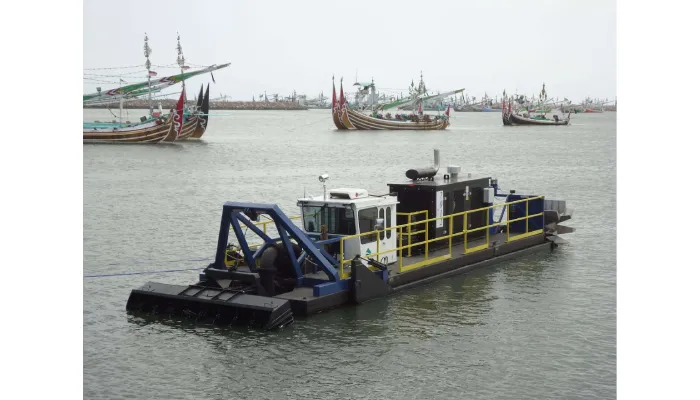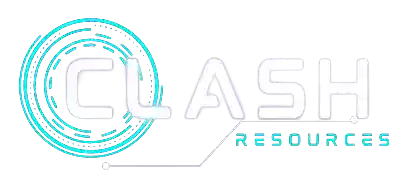
How to Reduce Costs When Using a Canal Dredge?
Reducing costs when using a canal dredge mainly depends on understanding the biggest expenses involved, like moving equipment and personnel, as well as managing sediment disposal in eco-friendly ways. Picking the right type and size of dredger for your project helps avoid extra spending; for example, using hydraulic dredgers for softer sediments can be cheaper than heavy cutter suction models. Careful planning is key: doing precise surveys, scheduling targeted dredging spots instead of continuous cleaning, and coordinating logistics reduce wasted time and resources. Working with experienced contractors also saves money by ensuring efficient methods and avoiding costly mistakes. Finally, maintaining equipment regularly and considering rentals over purchases keeps operational costs manageable.
Understand Major Cost Drivers in Canal Dredging
A significant part of the canal dredge costs comes from mobilizing equipment and personnel to the site. Transporting heavy dredging machines and crews, especially to remote or hard-to-access locations, can quickly add up. Disposal of dredged sediment is another major expense, particularly when environmental regulations require careful handling or treatment of contaminated materials. Fuel consumption is a continual cost factor, as dredgers and support vessels consume large amounts of fuel during operation. Labor costs cover a range of roles, including operators, supervisors, and support staff who are essential throughout the project duration. Equipment maintenance and repairs must not be overlooked, since downtime from breakdowns can delay work and increase overall expenses. The project’s scale, its length, depth, and sediment volume, directly impacts the total cost, with larger or deeper canals requiring more time and resources. Additionally, site conditions such as difficult access routes or unexpected sediment types (like debris or polluted material) can raise disposal and processing costs. Weather and water conditions also play a role by causing delays that extend operation time, driving up fuel and labor charges. Finally, permitting and compliance fees vary by location and may add to the budget depending on local regulations and project scope.
Choose the Right Type and Size of Dredger
Selecting the appropriate dredger type and size is crucial in controlling costs when dredging a canal. For example, hydraulic dredgers are a cost-effective choice for soft sediments in small to medium canals, as they handle slurry efficiently without excessive fuel use. Mechanical dredgers, like bucket or clamshell types, work well in shallow or confined spaces but tend to have higher maintenance needs, which can increase operating expenses over time. Larger projects with deep sediment often require cutter suction dredgers, but these come with higher upfront and running costs, so they should only be chosen when truly necessary. In sensitive environments with light sediment, jet-lift or airlift dredgers provide a low-impact, economical option that minimizes disruption. Amphibious and remote-controlled dredgers offer productivity benefits by reducing labor requirements, especially in hard-to-reach or tough sites, which can cut overall project duration and expense. Avoid oversizing equipment, since using a dredger larger than what the project demands leads to unnecessary fuel consumption and maintenance costs. Matching the dredger’s capacity to the project volume helps prevent idle time and wasted resources. Additionally, mobility is important for sites with limited access; choosing a dredger with good transportability can lower mobilization costs. Finally, consider equipment support factors like spare parts availability and technical service, as these influence downtime and repair costs. Power source and fuel type also affect operational expenses, so selecting machinery compatible with cost-efficient energy can make a difference over the project timeline.
Plan and Schedule Dredging Projects Carefully
Careful planning and scheduling are key to keeping canal dredging costs under control. Start with detailed pre-project surveys to understand sediment types and exact dredging needs, which helps avoid over-dredging and wasted effort. Instead of continuous dredging, consider targeted spot dredging or cyclical maintenance focused on priority areas where sediment buildup is most severe or navigation is critical. Coordinating logistics is equally important: align equipment transport, crew shifts, and sediment disposal timing to minimize idle periods and delays. Scheduling work during favorable weather and water conditions reduces the risk of interruptions and costly downtime. Be sure to prepare contingency plans for unexpected challenges such as contaminated sediment or limited site access. Also, integrate disposal site readiness into your timeline to prevent hold-ups once dredging begins. Using project management tools allows you to track progress and make adjustments quickly, helping keep the project on budget. Finally, clear communication with all stakeholders ensures expectations are aligned and reduces the chance of misunderstandings that could lead to costly changes or delays. Limiting the initial dredging scope to critical areas first can help control costs while allowing you to assess future needs more accurately.
Hire Skilled Contractors and Consultants
Selecting contractors with proven experience in similar dredging projects and environments is key to reducing costs. Skilled contractors bring knowledge of the most efficient equipment and methods suited to your site, helping avoid unnecessary expenses from trial and error. Checking safety records and environmental compliance history before awarding contracts protects against costly fines and delays. Consultants play a crucial role by guiding you through permitting processes, which can often be complex and time-consuming. Outsourcing dredging work to experienced contractors also saves money by eliminating the need to purchase and maintain expensive equipment, which is especially practical for infrequent projects. Many contractors have access to newer technology and trained operators, improving productivity and lowering labor costs. Negotiating clear performance and cost terms upfront helps control budget risks and sets expectations for project delivery. Look for contractors offering flexible services that can adjust to your project’s size and schedule, preventing overspending on unused resources. Additionally, experts can provide sediment testing and disposal recommendations to avoid surprises in handling costs. Maintaining open communication throughout the project allows you to monitor contractor performance and quickly address any issues, keeping the work on track and within budget.
Decide Between Equipment Rental and Purchase
When deciding between renting and buying a canal dredge, consider how often you’ll need the equipment. Renting is usually more cost-effective for one-time or occasional projects since it avoids a large upfront investment and ongoing costs like storage, insurance, and maintenance. Rental equipment often comes with maintenance support, which helps reduce operational risks and downtime. On the other hand, purchasing a dredger makes sense if you have frequent, long-term dredging needs because the overall costs can be spread out over many uses, lowering the cost per project. However, owning equipment means planning for maintenance downtime and training operators, which adds to indirect costs. Also, make sure the rental market offers the right dredger type and size for your specific project, as using improper equipment can increase expenses. Leasing can be a middle ground, offering more flexible terms than outright buying but longer commitments than renting. Renting also lets you access newer, more energy-efficient machines without the burden of ownership, which can lower fuel and repair costs. Lastly, consider how equipment availability affects your project schedule. Renting might mean waiting for the right dredger to be available, potentially delaying work, while owning equipment gives you full control over timing but requires more upfront planning and investment.
Manage Sediment Disposal to Cut Expenses
Proper management of sediment disposal can significantly reduce dredging costs. One effective strategy is reusing dredged material for landscaping, shoreline stabilization, or as farm soil, which helps avoid high disposal fees. Before reuse or disposal, testing sediment for contamination is crucial to ensure safety and compliance with regulations. Negotiating disposal agreements with local landowners or waste facilities can also lower fees, especially if you can arrange regular deliveries or bulk disposal. On-site sediment dewatering is another cost-saving option; removing excess water reduces transport volume, cutting fuel and hauling expenses. Planning disposal logistics early prevents delays and extra storage charges, so coordinate timing between dredging, transport, and disposal sites carefully. Tracking sediment volumes accurately avoids overestimating disposal needs, which can lead to unnecessary costs. Additionally, exploring beneficial use programs or environmental restoration projects may provide opportunities to repurpose sediment while qualifying for cost incentives or grants. It’s essential to avoid illegal dumping to prevent fines or project shutdowns. Using sediment characterization data helps select the most economical disposal method, balancing environmental safety and budget constraints. For example, clean sediment might be approved for reuse on nearby farmland, while contaminated material may require more costly treatment or landfill disposal. By combining these approaches, you can manage sediment disposal efficiently and keep dredging expenses in check.
Maintain Equipment and Follow Best Practices
Keeping your canal dredge in good shape is one of the best ways to reduce costs over time. Regular maintenance prevents unexpected breakdowns that can lead to expensive repairs and project delays. It’s important to inspect equipment frequently and replace worn parts promptly to keep the dredger running efficiently. Clean and lubricate components as recommended to extend service life and avoid unnecessary wear. Training operators on efficient dredging techniques also plays a key role: skilled operators use less fuel, reduce equipment strain, and minimize idle time. Using fuel-efficient engines and optimizing operating parameters further lowers fuel expenses. Documenting all maintenance activities helps track equipment health and identify patterns that can improve scheduling and reduce downtime. Additionally, adopting operational best practices, such as avoiding excessive loads and minimizing idle running, can protect the dredger from premature wear. Monitoring systems are useful tools to spot performance drops or mechanical issues early, allowing for timely intervention. Finally, encouraging feedback from operators provides practical insights that refine maintenance routines and operational methods, ensuring that costs stay under control while maintaining dredging quality.
Use Technology and Automation to Lower Costs
Integrating technology and automation into canal dredging projects can significantly reduce costs by improving efficiency and safety. Remote-controlled dredgers cut down on labor needs and minimize risks in hard-to-access or hazardous sites, allowing operations to continue without compromising worker safety. Autonomous dredging systems enhance precision, preventing over-dredging which wastes fuel and time. Real-time monitoring tools provide immediate feedback, enabling operators to adjust dredging depth and speed dynamically, optimizing resource use. Survey technologies like GPS and sonar map sediment conditions accurately, guiding dredging efforts to the exact spots that need attention. Data analytics help plan optimal dredging routes and schedules, reducing idle time and unnecessary equipment wear. Automation also lowers human error and equipment misuse, which can otherwise lead to costly repairs or delays. Investing in integrated software solutions streamlines project management by combining operational data with reporting functions, making compliance documentation faster and more accurate. Additionally, remote diagnostics allow for quicker identification and resolution of equipment issues, minimizing downtime and repair expenses. Together, these technologies contribute to more efficient dredging projects with lower overall costs.
Follow Environmental and Regulatory Rules
Before starting any canal dredging project, it’s important to identify all necessary permits and environmental regulations to avoid costly fines and delays. Using dredging methods that reduce ecosystem disturbance, such as low-impact hydraulic or jet-lift dredgers, helps protect aquatic life and can prevent expensive remediation. Monitoring water quality and sediment conditions during dredging is often required by regulators and ensures compliance while catching potential issues early. Preparing environmental impact assessments and mitigation plans upfront clarifies how to manage risks and meet regulatory expectations. Timing restrictions are common to protect wildlife during breeding or migration seasons, so scheduling dredging around these periods avoids penalties and supports ecosystem health. Maintaining detailed records and reports facilitates smooth audits and inspections, preventing unexpected compliance costs. Training crews on environmental best practices and emergency responses ensures that everyone understands how to minimize harm and react properly if problems arise. Early engagement with regulators helps clarify requirements and fosters cooperation, which can speed up approvals and reduce project uncertainty. Proper sediment handling procedures prevent contamination spread, protecting water quality and limiting cleanup expenses. Finally, planning sediment disposal or reuse in line with environmental standards can lower costs by avoiding fines and making use of dredged material in beneficial ways like landscaping or shoreline stabilization.
Create a Realistic Budget and Track Expenses
A realistic budget for canal dredging should cover all expected costs: mobilization, fuel, labor, equipment maintenance, sediment disposal, permits, and a contingency fund for surprises. Using past project data and expert advice helps set accurate estimates, avoiding underbudgeting that can stall work later. Regularly monitoring expenses against the budget lets you catch overspending early and adjust the project scope or methods if needed. Setting aside contingency funds is crucial since unexpected sediment types or site access issues often arise. Keeping detailed records of all costs ensures transparency and aids future planning. Budgeting software or simple spreadsheets can improve tracking and financial management. It’s also important to communicate budget status clearly and consistently with stakeholders to manage expectations and avoid surprises. As the project moves through different phases, review and update the budget to reflect actual conditions and progress. After completion, analyze key cost drivers to refine budgeting accuracy for future dredging projects.



